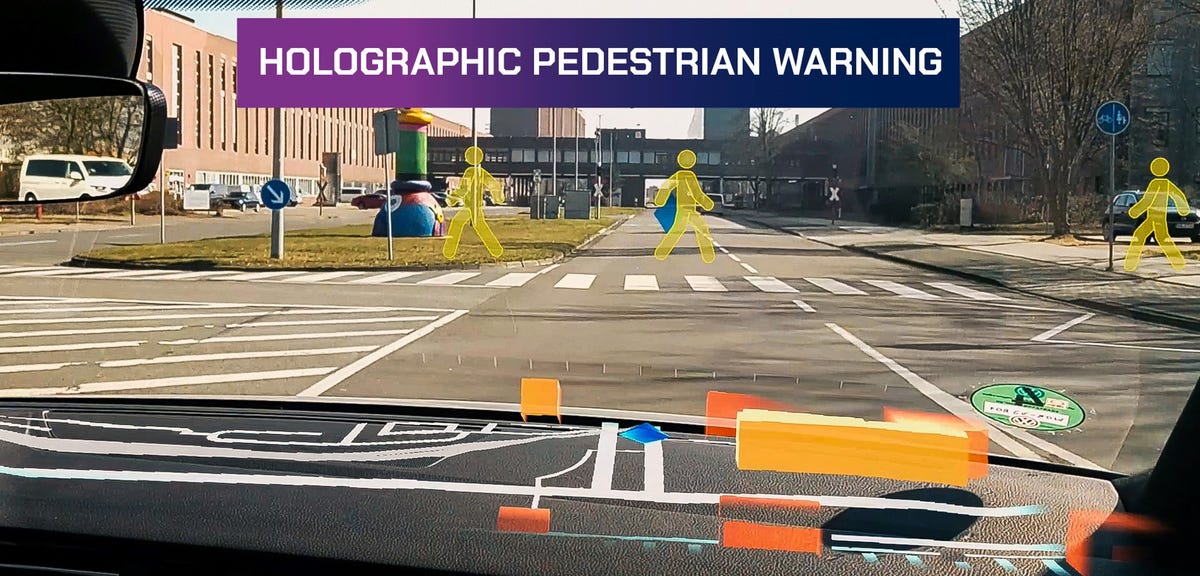Microsoft, Volkswagen are working to enable HoloLens headsets to be used in vehicles | ZDNet

Credit: Microsoft
Microsoft and Volkswagen are working together to advance the existing Moving Platform mode for Windows Holographic, the OS inside Microsoft’s HoloLens augmented-reality headset. The goal: To enable the use of mixed-reality headsets inside vehicles for tasks like training drivers to handle challenging road conditions or creating new experiences for autonomous vehicles. Microsoft officials believe this capability could be applied to other industries in the future.
Microsoft introduced the Moving Platform Mode in Windows Holographic 21H2. Officials said that after enabling Moving Platform Mode, customers could use HoloLens 2 in “previously inaccessible environments like large ships and large marine vessels,” which were designated “low dynamic motion moving platforms.”
Volkswagen has been experimenting for several years on how augmented reality could be used in cars. The company added an augmented reality head-up display to its ID. family of electric cars in 20202 that project navigation arrows, lane markings, and other relevant information onto the area in front of cars. Before that, it had done experiments on how augmented reality could help teach driving on a racecourse.
One of the biggest challenges of using the HoloLens inside a moving vehicle is the inability of its sensors to maintain tracking, resulting in holograms disappearing. According to Microsoft, the Volkswagen and Microsoft teams started collaborating in 2018 to develop the moving platform feature for HoloLens 2.
This isn’t the first collaboration between Microsoft and Volkswagen. Volkswagen is one of Microsoft’s key customers for the Microsoft Connected Vehicle Platform. Microsoft’s Connected Vehicle Platform (MCVP) — formerly known as its Connected Car Platform — is all about getting vehicles to connect to Microsoft cloud services like Azure, Office 365, and more on the back-end. Last year, Volkswagen and Microsoft announced they were working together to build an Azure-based Automated Driving Platform that would deliver automated driving functions for Volkswagen Group cars.
The news surrounding HoloLens lately has not been positive. Microsoft has encountered issues in getting its augmented reality technology to work well enough to satisfy the U.S. Army — with which it has a contract worth $22 billion for headsets using some of the HoloLens technology. Microsoft’s decision to focus HoloLens on the enterprise market, not the consumer one, reportedly has caused rifts inside the team and led, at least in part, to hundreds of those working on HoloLens to leave Microsoft and join other AR/VR companies.
While Microsoft has shown off how its Azure-powered Mesh augmented-reality platform could fit into its “enterprise metaverse” vision, at this point, we’re still waiting for a preview of the Mesh for Teams experience that involves avatars interacting in shared virtual situations.
For all the latest Technology News Click Here
For the latest news and updates, follow us on Google News.

